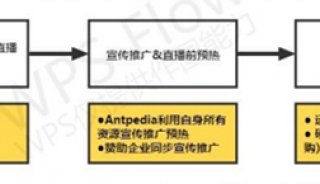Low Loss Sapphire Windows for High Power Microwave Transmission(十一)
Fixture Testing. Fixture testing consisted of vacuum, heating, pressure, and microwave testing.
Pressure Testing. Initial pressure testing of thin sapphire windows in a fixture was conducted on both halves of the standard fixture that had been fabricated with thin windows in Phase I. The sapphire windows were 76 mm diameter, 0.325 mm thick that were matt finished on one side and epi-polished on the other. The matt side of the finish was placed on the pressure side where the stress was lowest, since the matt side was the weakest. The windows were metalized (again on the epi side) and then soldered to the copper cup of a standard fixture, replacing the normally thicker window.
Pressure testing was done by evacuating the waveguide side. This fixture was originally intended to be used to test the windows for microwave response in the resonant ring, but when it was first pumped down for leak checking at ORNL one of the windows immediately broke. The fixture was then sent to TvU for inspection and further testing of the remaining soldered window.
A number of odd features were noted. First, the window broke without cracking the outer 5 mm wide periphery that had been soldered to the copper. Second, the solder joint of the broken window that was visible through the window looked substantially different in both color and texture compared with the unbroken window (that had also been evacuated).
At TvU, the unbroken window was evacuated to full vacuum more than 5 times without breaking to determine if it would fail as a result of multiple loading cycles and the associated flexing. The window was next tested for deflection under load to see if the window was behaving as predicted by modeling.
Initial setup for the deflection tests showed that the window was bowed toward the matt and pressure side. Examination of the soldering process then showed that the bowing was a necessary part of the soldering process. For soldering, the window and copper cup were first heated until the solder melted. When the solder solidified, the window and copper were fixed relative to each other at the interface, and subsequent cooling to room temperature contracted both materials by an amount determined by their coefficients of thermal expansion. In the case of sapphire and copper, the copper contracted much more than the sapphire, leaving the copper under tension, the sapphire under compression, and the window bowed. The center deflection of the window was found to be 0.15 mm from the neutral plane in the unloaded case, and 0.21 mm in the loaded case for a total displacement of 0.36 mm, or 1.1 times the disk thickness.
The soldering thus places an effective preload on the disk in a similar manner to the cantilevering caused by an O-ring seal outside the pivot radius. Note that this effect is only noticeable for the very thin windows tested in this program. It would be ideal if this preloading could be substituted for the cantilevering, since this would greatly simplify the fixture design. In the case of the soldered windows this configuration unfortunately puts large stresses on the pressure side of the disk at the edge of the aperture. Presumably this caused the failure of the disk. After a series of deflection tests, the second window broke in a similar manner to the first. It was later found during Task 1 analysis that the mounting configuration put the matt side in considerable stress during pressure testing and caused the window to break - the strengthened windows would not be close to failure.
The final prototype windows were pressure tested a number of times. They were first vacuum checked for leaks at 3E Labs as part of the braze inspection procedure. The windows were then sent to TvU where one window was pressure tested to 3 atm, and its deflection during pressure testing measured. The windows were then sent to ORNL where they were further vacuum tested after welding into the fixture. One window cracked circumferentially within the braze zone, but this did not affect the window seal or microwave capability.
Heat Testing. Heating tests were confined to the thermal stress testing described in Task 1. These tests demonstrated that the very thin windows will not be susceptible to hot spots as normal windows are. Inadvertent heat testing was done during e-beam welding at ORNL, when the e-beam heated the fixture locally. The windows were unaffected except that the circumferential crack elongated without affecting the window capabilities. The only testing needed beyond this is high power microwave testing.
Bakeout Testing It is not clear how many cycles of operation would be required during actual use or how many baking cycles would be required to demonstrate a successful design. Standard bakeout temperatures are 200 and 400°C, but CPI requires 500 or 600°C bakeout. It is believed that this high a bakeout temperature was demonstrated by the fabrication procedures themselves. A standard fixture was used, together with welding and a 900°C sapphire braze. These techniques should be adequate for a 600°C bakeout.
Cooling Tests. The cooling flow was tested in a standard double window fixture during microwave testing at ORNL. No unusual phenomena were observed.
Microwave Testing. The window fixture was first tested under low power microwaves; it responded as a very thin piece of sapphire. There are minor questions about system response once the disks have undergone the few mm deflection that is expected under full pressure coolant load. It is believed that this effect to be minor, and one that can easily be compensated for.
Resonant Ring Development and High Power Testing.
This work was performed at ORNL under the direction of Dr. Timothy Bigelow. The objective of this task was to develop a quasi-optical high power HE11resonant ring to provide a means for high power window testing of microwave components at 1.5 MW of transmitted power or greater. Such a resonant ring would be an economical test device to perform high power microwave window tests using existing lower-power (200 kW) gyrotron sources. These low power gyrotrons use conventional windows operating at the limit of their performance capability. The resonant ring will permit off-line testing of new window concepts independently of gyrotron development, a capability that will greatly simplify the process of window and component development by making it an off-line parallel effort.
The resonant ring produces extremely high microwave power levels in a waveguide by forming a traveling wave resonant cavity that captures the power from a microwave source into a closed waveguide loop or ring. The power in the ring rapidly builds up to a level that is limited only by losses in the waveguide structure and window or other device under test. A traveling wave resonance is significant in that the electromagnetic field structure in the waveguide is identical to that of a much higher power source being transmitted in a waveguide to a matched load. A conventional resonant cavity has a standing wave pattern where the field structure varies rapidly along the length of the cavity, which would produce unrealistic heating patterns in a window under test.
The idea for a quasi-optical resonant ring [19] was derived from earlier work with a conventional single-mode rectangular waveguide resonant ring [20] that has been occasionally used for testing windows and waveguide breakdown in various microwave components. The resonant ring consists of a loop or ring of waveguide and a directional coupler to couple power into the ring. The length of the ring is adjusted to equal an integral number of waveguide wavelengths at the frequency of interest. The directional coupler also couples power out of the ring. However, at resonance, the power coupled out of the ring equals the uncoupled input power but is out of phase, so that any uncoupled power from the source is canceled out and all the power goes into the ring. For maximum gain, the coupler value must be set to be compatible with the losses in the ring. With low losses, for instance <1%, the ring gain or ratio of power in the ring to power at the input port is greater than 10.
The quasi-optical resonant ring has a similar mode of operation to that of a conventional resonant ring, but some innovations were required to implement the concept for high power millimeter waves. High power microwave or millimeter wave windows and waveguide systems must be built using highly oversized waveguide to reduce resistive wall losses and to reduce electric field levels so that arcing can be avoided. An oversized waveguide is one that is large enough in cross section to allow more than a single dominant mode to propagate; for practical systems operating at >50 GHz and >200kW cw, hundreds of modes can propagate. A waveguide must remain less than a wavelength in width or diameter to allow only a single mode to exist, which makes high frequency single mode waveguides extremely small and lossy. A highly oversized waveguide can have very low resistive loss and low electric fields but it can also suffer from mode conversion loss if it is not quite straight. Power lost to other modes is not easily recoverable and these modes are likely to have higher loss and will be quickly damped. Making bends in oversized waveguide is difficult because of the mode conversion losses they introduce. A miter bend can be used for a waveguide that is highly oversized with increasingly lower loss as the diameter to wavelength ratio increases, and this fact is taken advantage of in this resonant ring design.
Two types of oversized circular waveguide are commonly used for high power transmission of millimeter waves. In each type, a low order mode has the lowest loss, the most convenient properties, and is the mode of interest. A smooth wall circular pipe will propagate the TE11 mode with very low loss. This mode has a circular electric field pattern and very low wall currents and therefore has low resistive loss. It also has reasonably low mode conversion loss in miter bends. Unfortunately, the circular electric field pattern forms a rather poor conical, unpolarized radiation pattern when the waveguide is terminated into free space, so it requires a mode conversion device if a narrow, polarized pencil beam is desired. If a circular waveguide is corrugated on the inside wall with electrically small grooves in the azimuthal direction, a hybrid HE11 mode propagates that has nearly perfect linear polarization and a gaussian-like field distribution which forms a low-sidelobe gaussian-like pencil beam when the waveguide is terminated in free space. This mode has comparably low loss as with the TE01 mode. Resonant ring designs for both the TE01 and HE11 modes are of interest, but the HE11 mode device is more complicated to build. For this reason the TE01 mode was used in Phase I to demonstrate feasibility whereas the HE11 mode was used for high power work in Phase 2.
To form a ring, the quasi-optical resonant ring requires 4 bends of 90° and a directional coupler. The configuration shown in Fig. 18 was adopted as the most useful, although others are possible. The directional coupler consists of a perforated plate for the TE01 mode device or a closely spaced wire grid for the HE11 mode.

Figure 18. Schematic of the resonant ring.



















